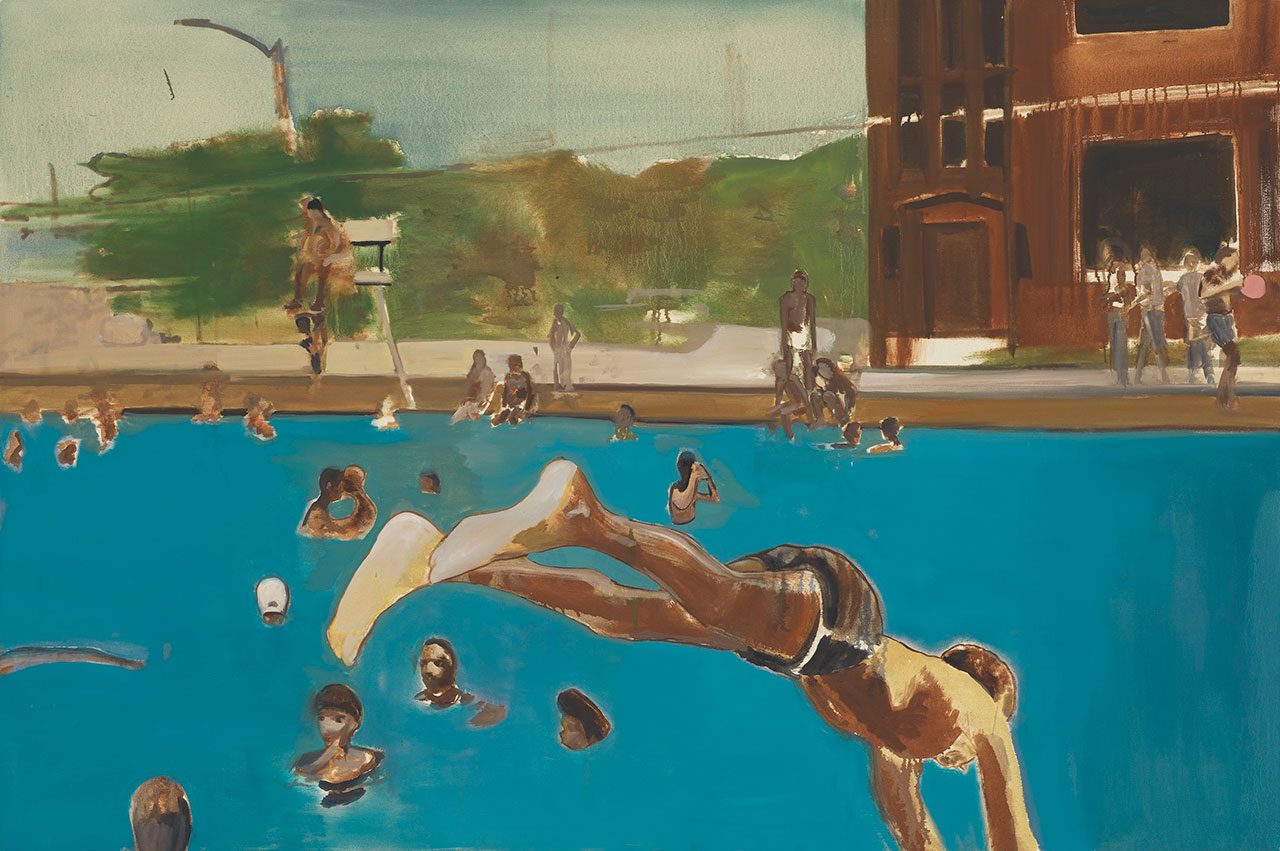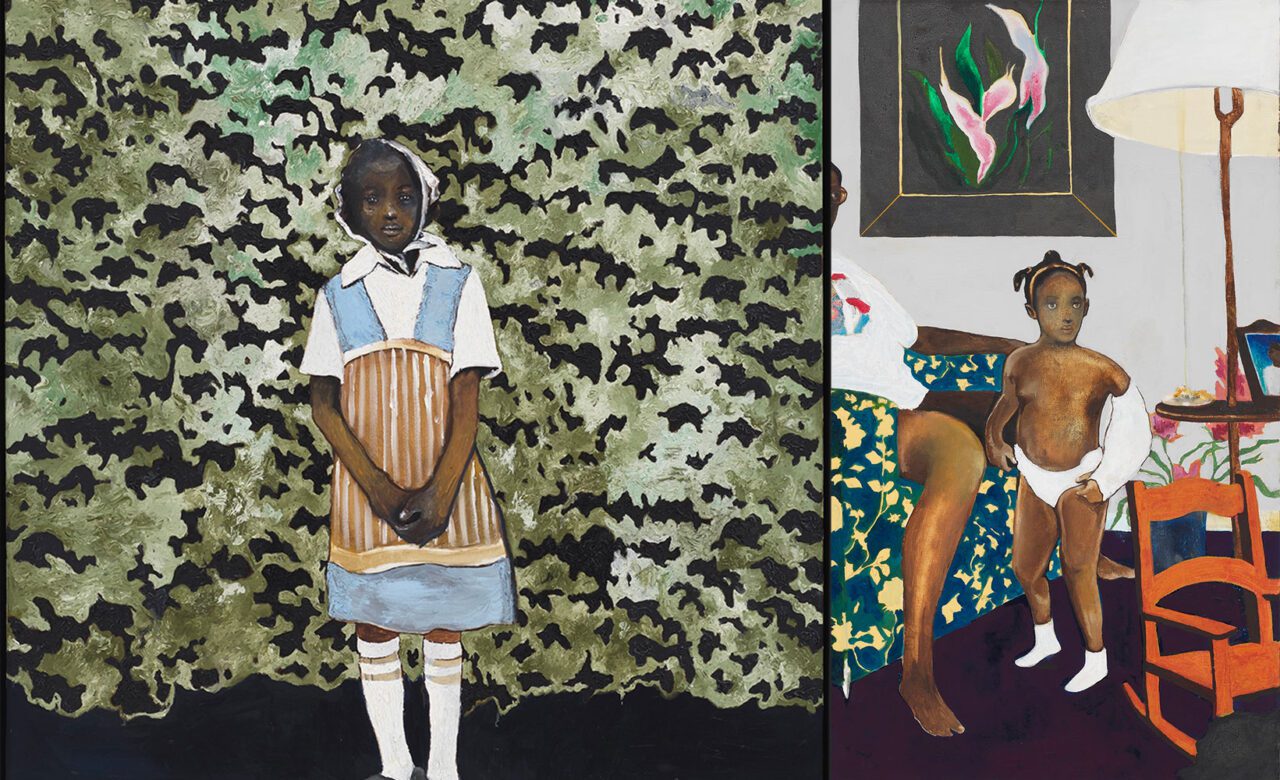PRESENTATION: Noah Davis
 Based primarily in Los Angeles, Noah Davis created a body of figurative paintings that explore a range of Black life. Davis knew that he had a responsibility to represent the people who surrounded him. He drew on anonymous photography found in flea markets, personal archives, film and television, music, literature, art history and his imagination to create a ravishing body of work. Often enigmatic, sometimes uncanny, Davis’ paintings reveal a deep feeling for people, humanity and the existential and universal layers of everyday life.
Based primarily in Los Angeles, Noah Davis created a body of figurative paintings that explore a range of Black life. Davis knew that he had a responsibility to represent the people who surrounded him. He drew on anonymous photography found in flea markets, personal archives, film and television, music, literature, art history and his imagination to create a ravishing body of work. Often enigmatic, sometimes uncanny, Davis’ paintings reveal a deep feeling for people, humanity and the existential and universal layers of everyday life.
By Efi Michalarou
Photo: DAS MINSK Kunsthaus Archive

Bringing together approximately sixty works spanning the artist’s complete oeuvre, this major retrospective offers a comprehensive over- view of Davis’ extraordinary practice. Curated chronologically, the retrospective presents Davis’ relentless creativity and curiosity commencing with his first exhibition in 2007, spanning eight years until his untimely death in 2015. Featuring previously unseen paintings, works on paper and sculpture, the exhibition pays special attention to the art historical and conceptual approaches in his practice, revealing that art history, imagery, humor, and above all, people were the epicenter of his work. Davis knew that he had a responsibility to represent the people who surrounded him. He created a series of paintings that focused on the lives of Black people. He elevat- ed normality to the subject of art: his figures dive into swimming pools, they sleep, dance, play music, they read and look at artworks in environments that can be interpreted as both realistic and dreamlike, cheerful and melancholic. It was precisely there, in the everyday, that Davis found the human, existential, and universal. He often also transferred traditional subjects and magical elements to his immediate surroundings in Los Angeles, creating timeless scenes full of references that are at once site-specific and universal. The exhibition underscores Davis’s unique perspective and his comprehensive knowledge about the history of figurative painting, including German art from Neue Sachlichkeit* and Magical Realism** to the Leipzig School***. At the same time, it shows how his motifs break from and interrogate the so-called canon by incorporat- ing his immediate surroundings. To this end, he drew upon anonymous photographs that he found at flea markets, from personal archives to images from film and television, music, literature, and art history as well as his own imagination—and in this way has created a fascinating body of work that is neither expressionistic nor surreal, neither romantic nor neusachlich. It lies somewhere between all of these categories—between the real and the magical. In 2012, Noah Davis and his wife Karon Davis founded the internationally renowned Underground Museum in Arlington Heights, a historically Black and Latin neighbor- hood in Los Angeles. Their aspiration and goal was “to change the way people view art, the way people buy art, and the way they make art.” The Underground Museum was a place to encounter art of “museum-quality,” as Noah Davis himself put it in quotation marks, but it was also equipped with a lending library, a bar inspired by Donald Judd, and a “Purple Garden” (partly in homage to Prince). As a space accessible to all, the Underground Museum hosted exhibitions, lectures, live music, film nights, and wellness sessions.
* Neue Sachlichkeit (The New Objectivity) was a movement in German art that arose during the 1920s as a reaction against expressionism. The term was coined by Gustav Friedrich Hartlaub, the director of the Kunsthalle in Mannheim, who used it as the title of an art exhibition staged in 1925 to showcase artists who were working in a post-expressionist spirit. As these artists—who included Max Beckmann, Otto Dix, George Grosz and Jeanne Mammen—rejected the self-involvement and romantic longings of the expressionists, Weimar intellectuals in general made a call to arms for public collaboration, engagement, and rejection of romantic idealism.
** Magical realism is a style or genre of fiction and art that presents a realistic view of the world while incorporating magical elements, often blurring the lines between speculation and reality. Magical realism is the most commonly used of the three terms and refers to literature in particular.
*** The Leipzig School is a movement of modern painting from the 1960s to 1980s, founded by painters who predominantly lived and worked in Leipzig, East Germany. The movement had its centre at the Hochschule für Grafik und Buchkunst, where several of the most prominent members were teachers. Some of their students, or students of students, became prominent and are referred to as the New Leipzig School.
Photo: Noah Davis, 1975 (8), 2013. Private collection © The Estate of Noah Davis. Courtesy The Estate of Noah Davis and David Zwirner. Photo: Kerry McFate
Info: Curator: Paola Malavassi, Assistant Curator: Marie Gerbaulet, DAS MINSK Kunsthaus in Potsdam, Max-Planck-Straße 17, Potsdam, Germany, Duration: 7/9/2025-5/1/2025, Days & Hours: Mon & Wed-Sun 10:00-19:00, https://dasminsk.de/


Right: Noah Davis, Untitled, 2014. © The Estate of Noah Davis. Courtesy The Estate of Noah Davis and David Zwirner



Right: Noah Davis, Single Mother with Father Out of the Picture, 2007–2008. Private Collection © The Estate of Noah Davis. Courtesy The Estate of Noah Davis and David Zwirner



